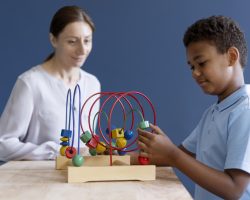NVLD and Invisible Learning Disorders

According to a 2020 study in the Journal of the American Medical Association (JAMA), between 2.2 and 2.9 million children in the U.S. and Canada may have NVLD. Alarmingly, up to 50% of these children remain undiagnosed. The overlapping symptoms with other conditions like ADHD or mild autism (formerly known as Asperger’s syndrome) contribute to frequent misdiagnosis.
Causes and Symptoms
NVLD is believed to be caused by damage or irregularities in the brain’s right hemisphere, particularly affecting visual-spatial abilities. Research has shown that children with NVLD tend to have smaller splenia, a part of the brain’s corpus callosum, compared to those with ADHD or autism. The splenium plays a critical role in connecting the left and right brain hemispheres, essential for visual-spatial functioning.
Despite significant evidence, NVLD is not officially recognized in the Diagnostic and Statistical Manual of Mental Disorders (DSM). This exclusion adds to the difficulty of obtaining a proper diagnosis and special education services.
Understanding the Invisible Challenges
Most learning disabilities, including NVLD, are invisible. Unlike someone in a wheelchair, those with NVLD do not show any physical signs of their struggles. As a result, people may not adjust their expectations or offer support for socially awkward behaviors and nonverbal communication challenges.
The good news is that awareness of neurodiversity is growing. Society is becoming more inclusive, recognizing that being different isn’t a flaw—it’s simply another way of being.
Learn More
For those interested in learning more, Linda Karanzalis, a board-certified cognitive specialist, shares her personal and professional experiences in her book, Misnamed, Misdiagnosed, Misunderstood. As someone with both NVLD and ADHD, Linda has worked for over 25 years helping individuals with various neurodiverse conditions, offering validation, awareness, and strategies for thriving in today’s world.
Follow Linda Karanzalis through her social media accounts:

Join the NVLD and NeuroDivergent Facebook Support Group
Linda Karanzalis, MS
Linda Karanzalis, MS, is a former special education classroom teacher with over 25 years of experience in the areas of learning disabilities, ADHD, social-emotional learning, social skills training, and behavior management















